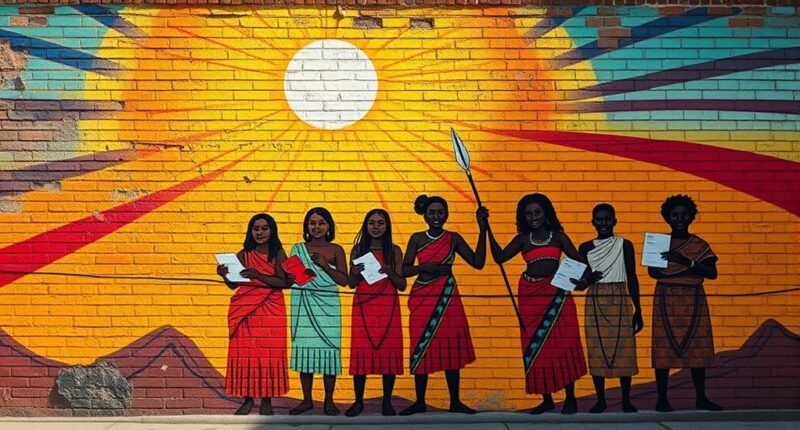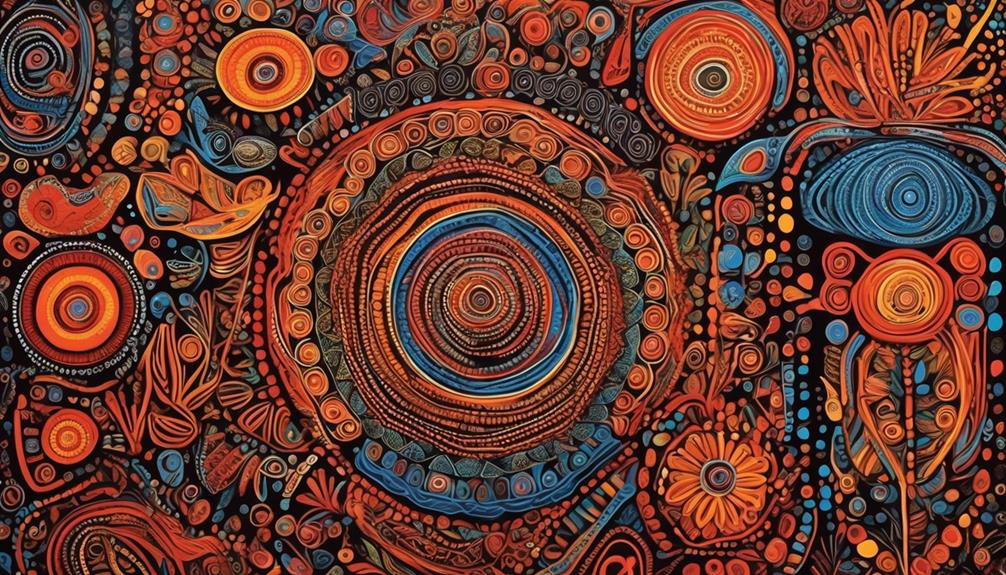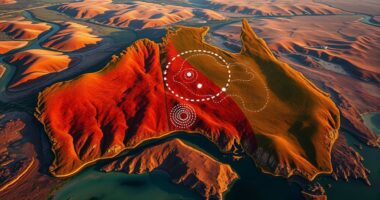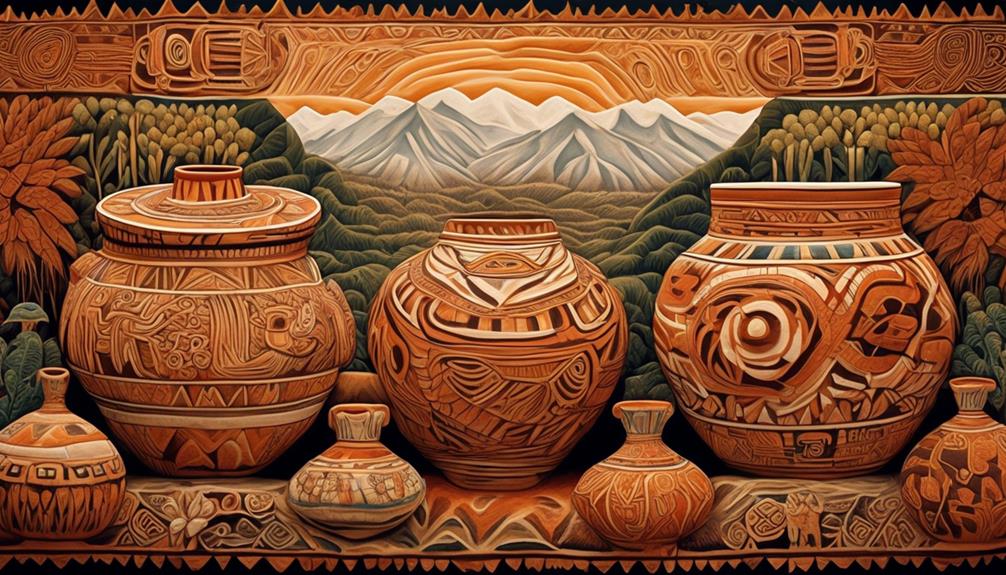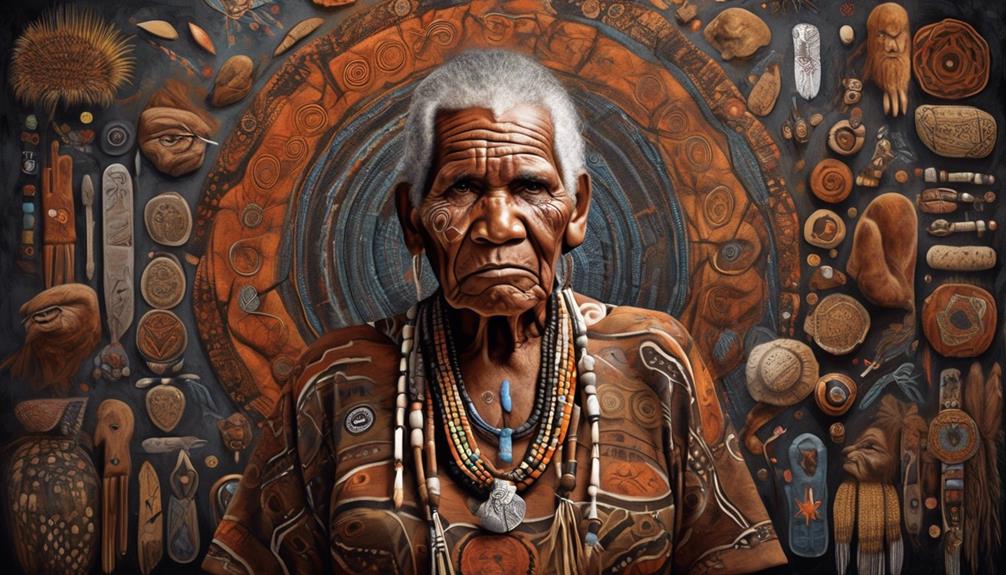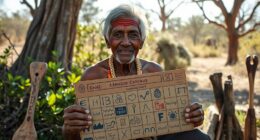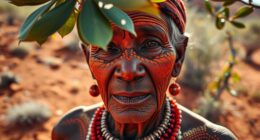Indigenous Australians faced longstanding barriers to voting, starting with the 1902 Commonwealth Franchise Act that excluded them from federal elections. It wasn’t until 1962 that they could officially enroll and vote, and a 1967 referendum helped recognize them in the census and expand federal powers. Ongoing efforts focus on constitutional recognition and reforms to promote inclusion. To discover how these milestones shaped Australia’s democratic evolution, continue exploring the story of Indigenous suffrage.
Key Takeaways
- Indigenous Australians were excluded from federal voting by the 1902 Commonwealth Franchise Act until reforms in the 1960s.
- The Commonwealth Electoral Act of 1962 enabled Indigenous Australians to enroll and vote.
- The 1967 referendum amended the constitution to include Indigenous peoples in the national census and empower federal policies.
- Indigenous leaders advocate for constitutional recognition to promote equality and reconciliation.
- Ongoing efforts focus on voting reforms, recognition campaigns, and technological improvements to enhance Indigenous participation.
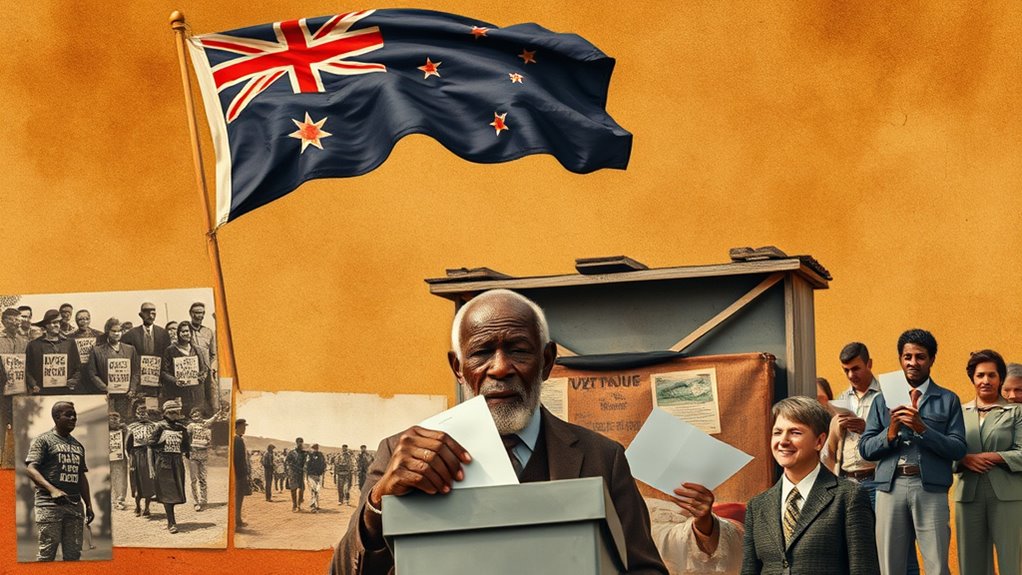
Australia has a long-standing commitment to voting rights, making it one of the most democratic countries in the world. However, this commitment has evolved over time, especially concerning Indigenous recognition and voting reform. For many years, Indigenous Australians were excluded from full participation in the electoral process, reflecting broader societal inequalities. Recognizing this, the country has progressively worked toward guaranteeing that Indigenous voices are heard and their rights protected.
Initially, Indigenous Australians faced significant barriers to voting. The Commonwealth Franchise Act of 1902 explicitly excluded Indigenous people from voting in federal elections, citing discriminatory policies that aimed to marginalize Aboriginal Australians. It wasn’t until the 1960s that these restrictions began to loosen. The 1962 Commonwealth Electoral Act finally allowed Indigenous Australians to enroll and vote, but many still faced challenges such as lack of awareness or accessibility issues, especially in remote areas. The push for Indigenous recognition gained momentum, highlighting the need for broader voting reform to address historical injustices.
Indigenous Australians faced voting barriers until the 1962 Electoral Act allowed enrollment and voting.
Significant milestones in Indigenous suffrage occurred in the 1960s and 1970s. In 1967, a national referendum overwhelmingly supported amending the constitution to include Indigenous Australians in the census and give the federal government power to create policies for them. This was a vital step toward recognition and equality. Following this, further voting reforms aimed at removing barriers and promoting inclusion. Today, Indigenous Australians have the legal right to vote, but ongoing challenges call for continuous efforts in Indigenous recognition and voting reform.
The journey toward full electoral participation has also involved advocating for constitutional change. Many Indigenous leaders and communities believe that formal recognition in the constitution would cement their status as equal citizens and promote reconciliation. This ongoing debate reflects broader issues of social justice and the importance of acknowledging Indigenous Australians’ unique history and contributions. Voting reform, in this scenario, isn’t just about the mechanics of voting but also about addressing systemic inequalities and fostering genuine reconciliation.
In recent years, efforts have intensified to promote Indigenous recognition through constitutional amendments and educational campaigns. These initiatives aim to guarantee that Indigenous Australians are not only able to vote but also have their voices meaningfully heard in decision-making processes. Additionally, advancements in color accuracy and other technological improvements in voting systems can enhance accessibility and trust in the electoral process. As you see, Australia’s journey toward inclusive democracy continues, with a focus on respecting Indigenous rights and implementing voting reform that reflects the country’s diverse history. This ongoing process underscores the nation’s commitment to building a more equitable and representative democracy.
Frequently Asked Questions
When Did Indigenous Australians First Gain Voting Rights Nationally?
You might wonder when Indigenous Australians first gained national voting rights. Initially, colonial voting laws excluded Indigenous people, denying them citizenship rights. It wasn’t until 1962 that the Commonwealth granted voting rights to all Indigenous Australians, recognizing their citizenship. This change marked a significant step in overcoming colonial voting restrictions and acknowledging their place in Australia’s democratic process. Your interest highlights how much progress has been made toward equality and inclusion in voting rights.
How Did Voting Laws Differ Across Australian States for Indigenous People?
You’ll find that voting laws varied across Australian states due to state disparities and regional policies. Some states granted Indigenous Australians voting rights early, while others delayed or imposed restrictions. These differences reflect the uneven approach Australia took toward Indigenous suffrage, with regional policies shaping access. Understanding these variations helps you see how local decisions impacted national progress toward full voting rights for Indigenous peoples.
Were There Any Significant Legal Challenges to Indigenous Suffrage?
You might find it surprising that there were few major legal challenges to Indigenous voting rights, despite significant voting restrictions. When laws like the Commonwealth Electoral Act of 1918 imposed restrictions, Indigenous Australians fought back through activism and legal battles, leading to gradual reforms. These legal challenges highlighted the ongoing struggle for equal voting rights, emphasizing that persistent effort was needed to overcome systemic voting restrictions and secure Indigenous suffrage in Australia.
How Has Indigenous Voting Participation Changed Over the Decades?
You’ll notice that Indigenous voting participation has gradually increased over the decades, thanks to efforts to address cultural barriers and boost community engagement. While initial participation was limited due to mistrust or lack of awareness, community-led initiatives and legal reforms have helped improve rates. Today, more Indigenous Australians are actively voting, showing progress in overcoming historical challenges and fostering greater inclusion in the democratic process.
What Ongoing Voting Barriers Do Indigenous Australians Face Today?
You face ongoing voting barriers like limited voting access in remote areas, where polling stations are scarce. Cultural barriers also persist, as some Indigenous Australians feel disconnected from mainstream electoral processes or face language and cultural misunderstandings. These issues can discourage participation, making it harder for you to exercise your voting rights fully. Addressing these barriers requires targeted efforts to improve voting access and respect cultural differences.
Conclusion
Your journey through Australia’s voting rights history shows how far you’ve come, yet the fight for true equality is still ongoing. Indigenous Australians faced incredible barriers, but their resilience transformed the nation’s democracy. This struggle isn’t just a footnote—it’s a powerful reminder that your voice can change the course of history. Remember, every step forward is a declaration to the unbreakable spirit of those who refused to be silenced, shaping a future where everyone truly counts.
Mary is a passionate writer who brings creativity and a fresh perspective to our team. Her words have the power to captivate and inspire, making her an essential contributor to our content. Mary’s commitment to storytelling and dedication to promoting Indigenous culture ensures that her work touches the hearts of our readers. We’re fortunate to have her as part of our team.
